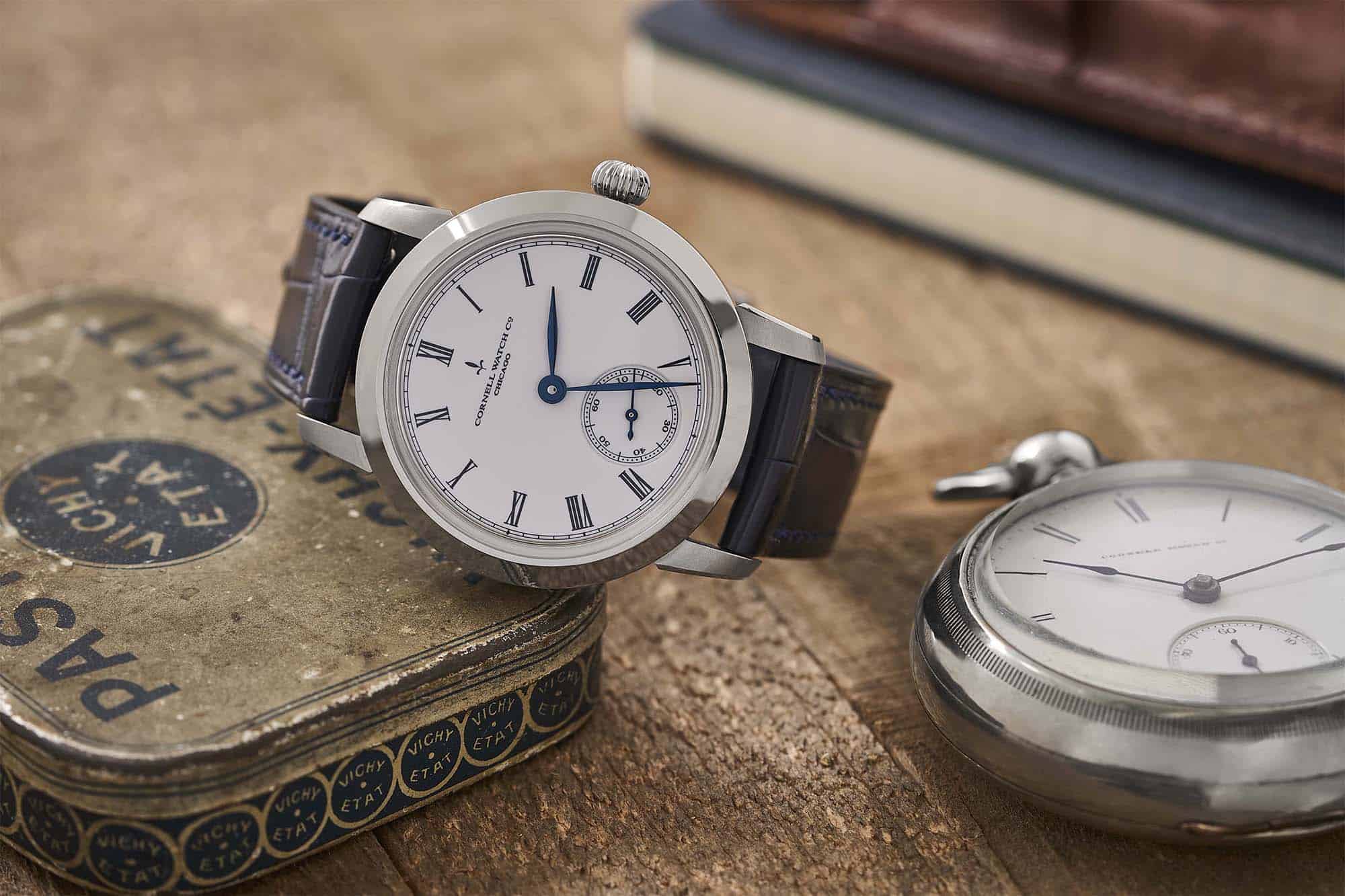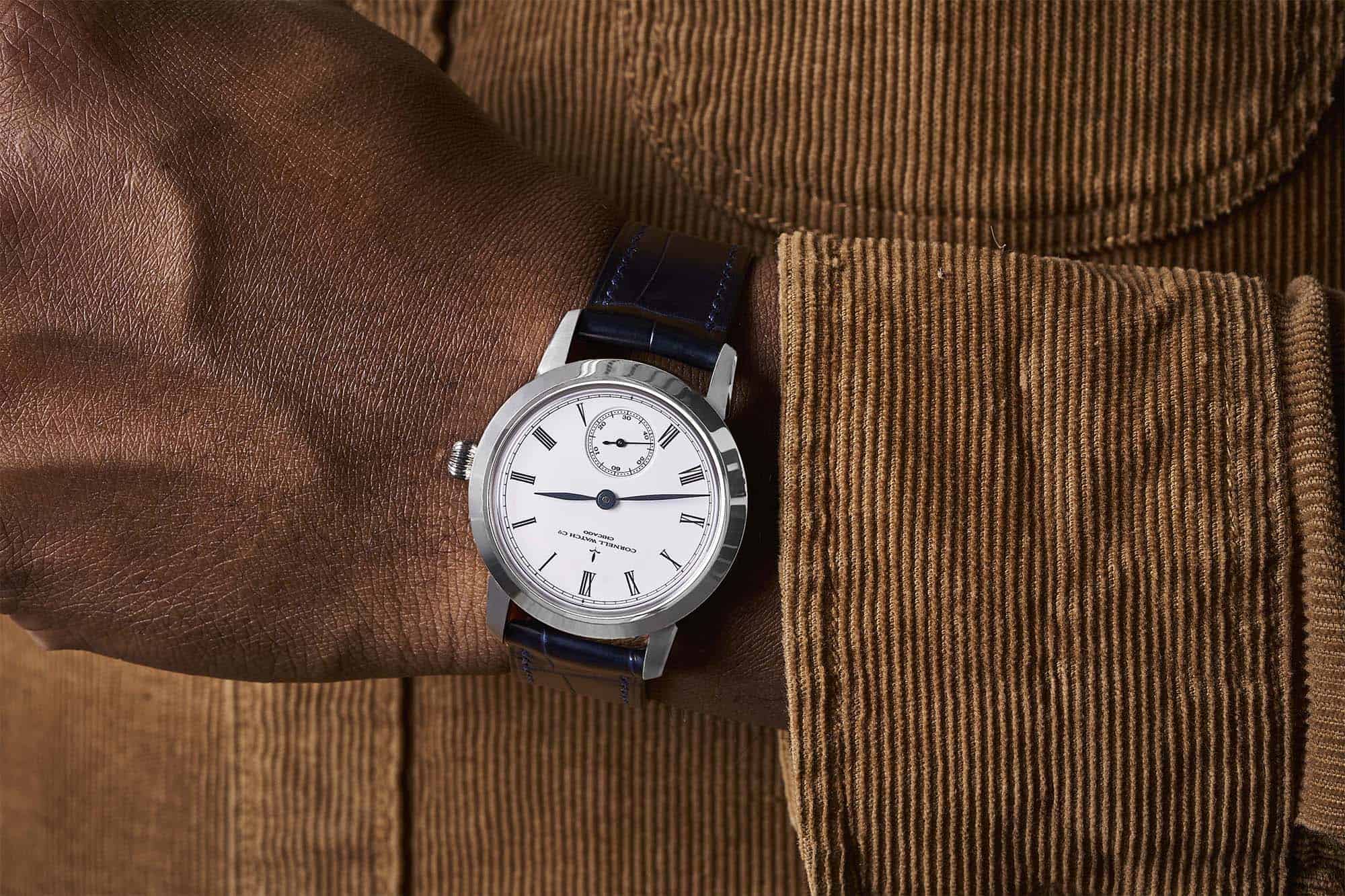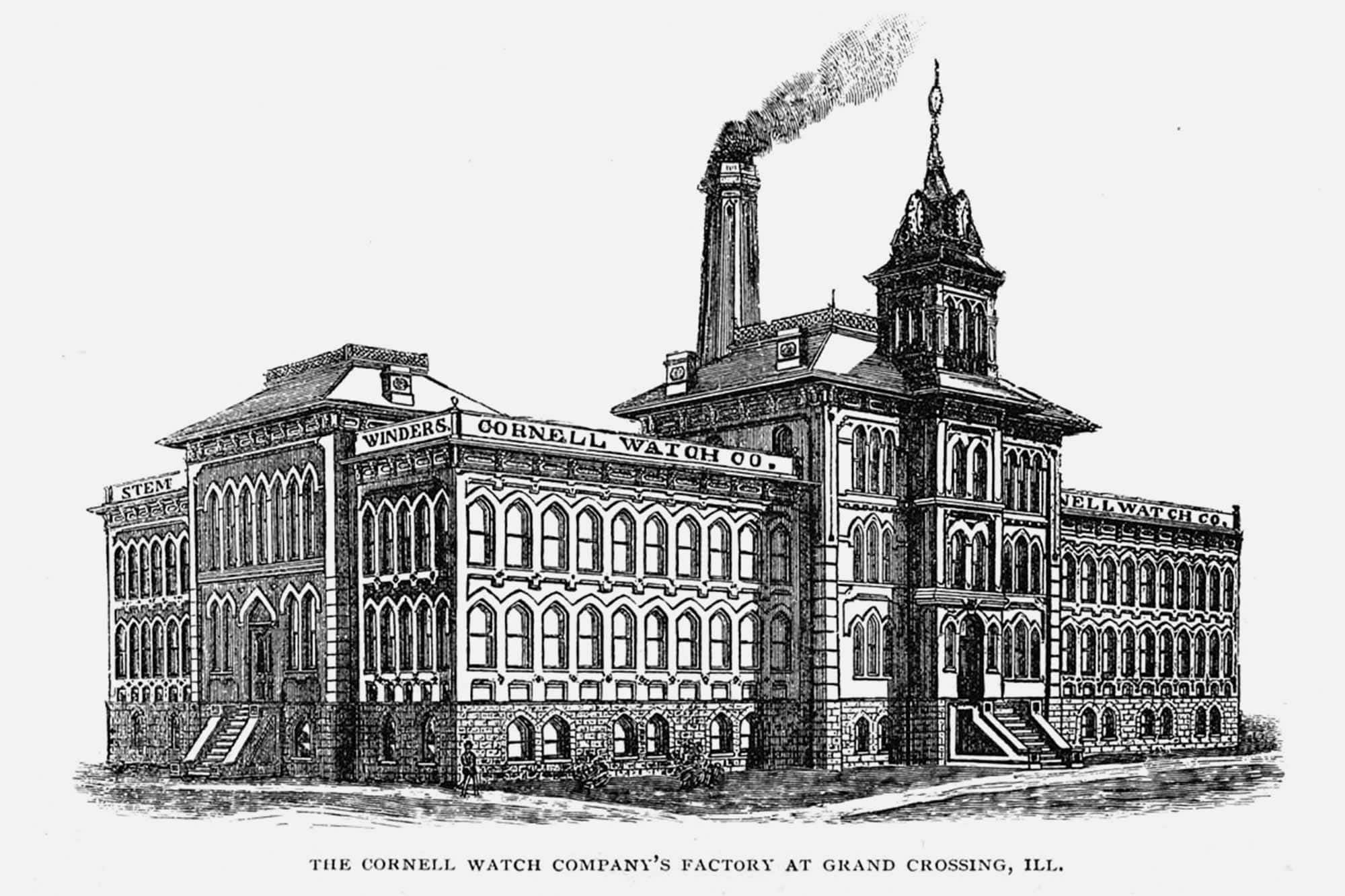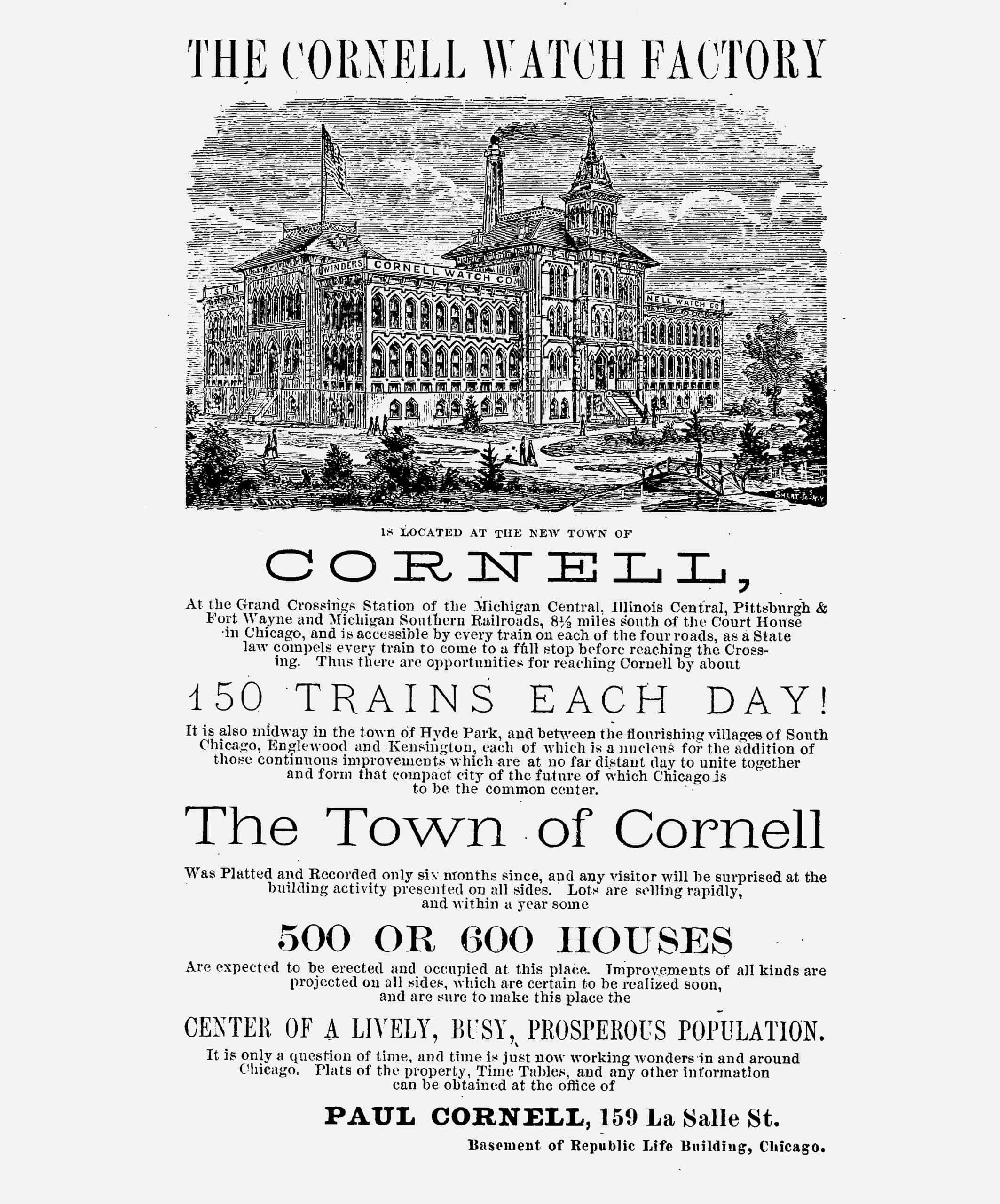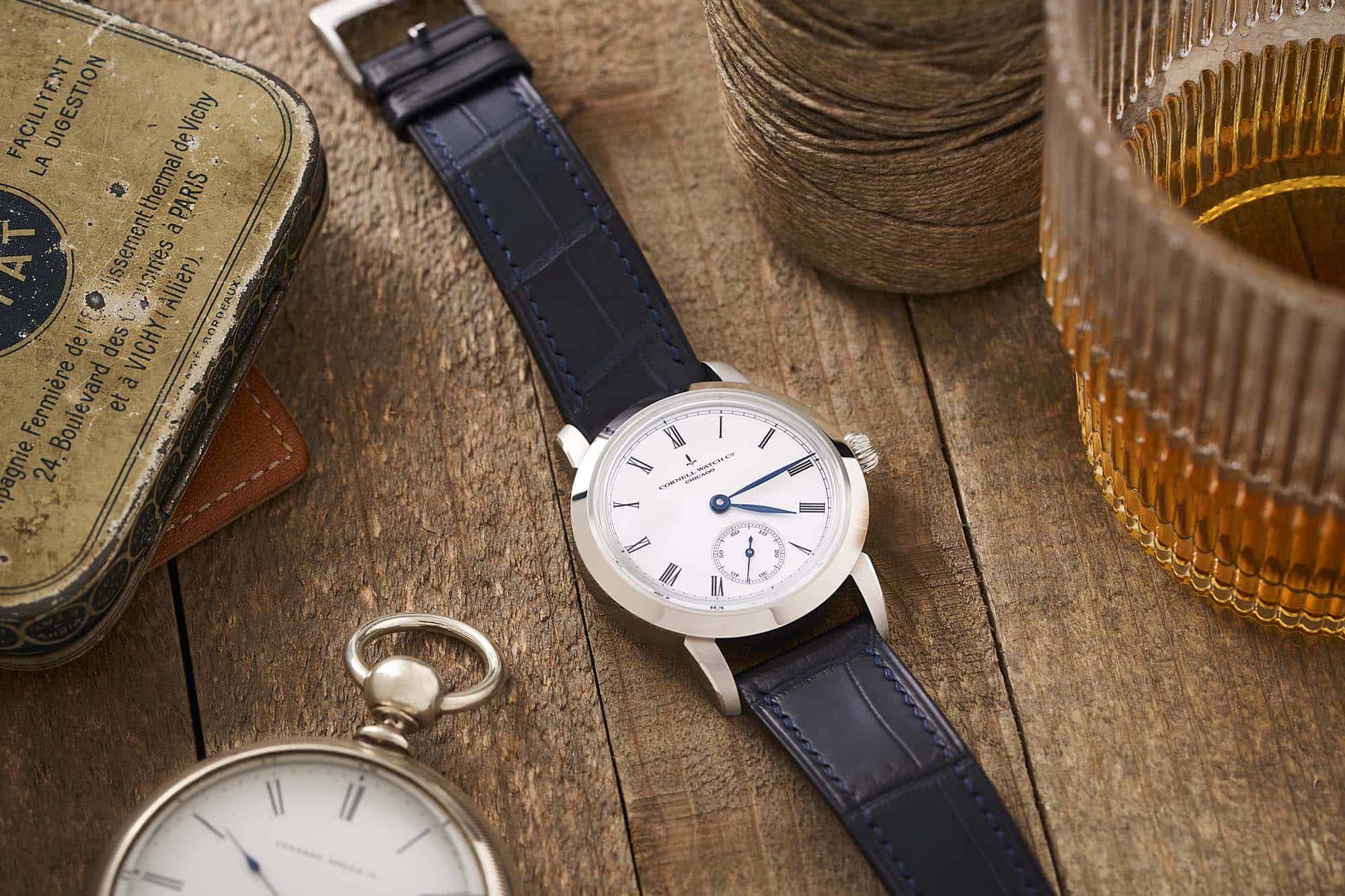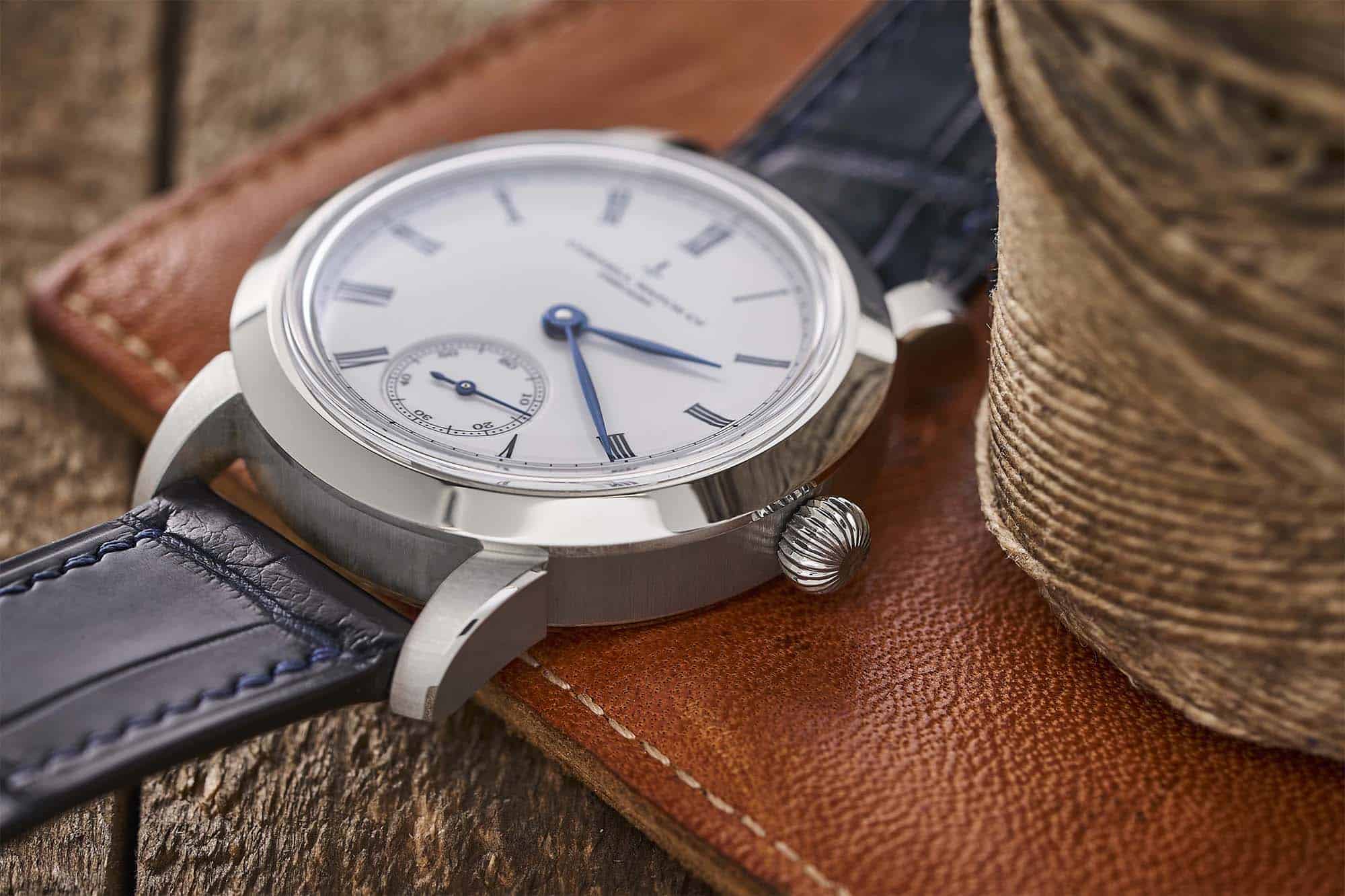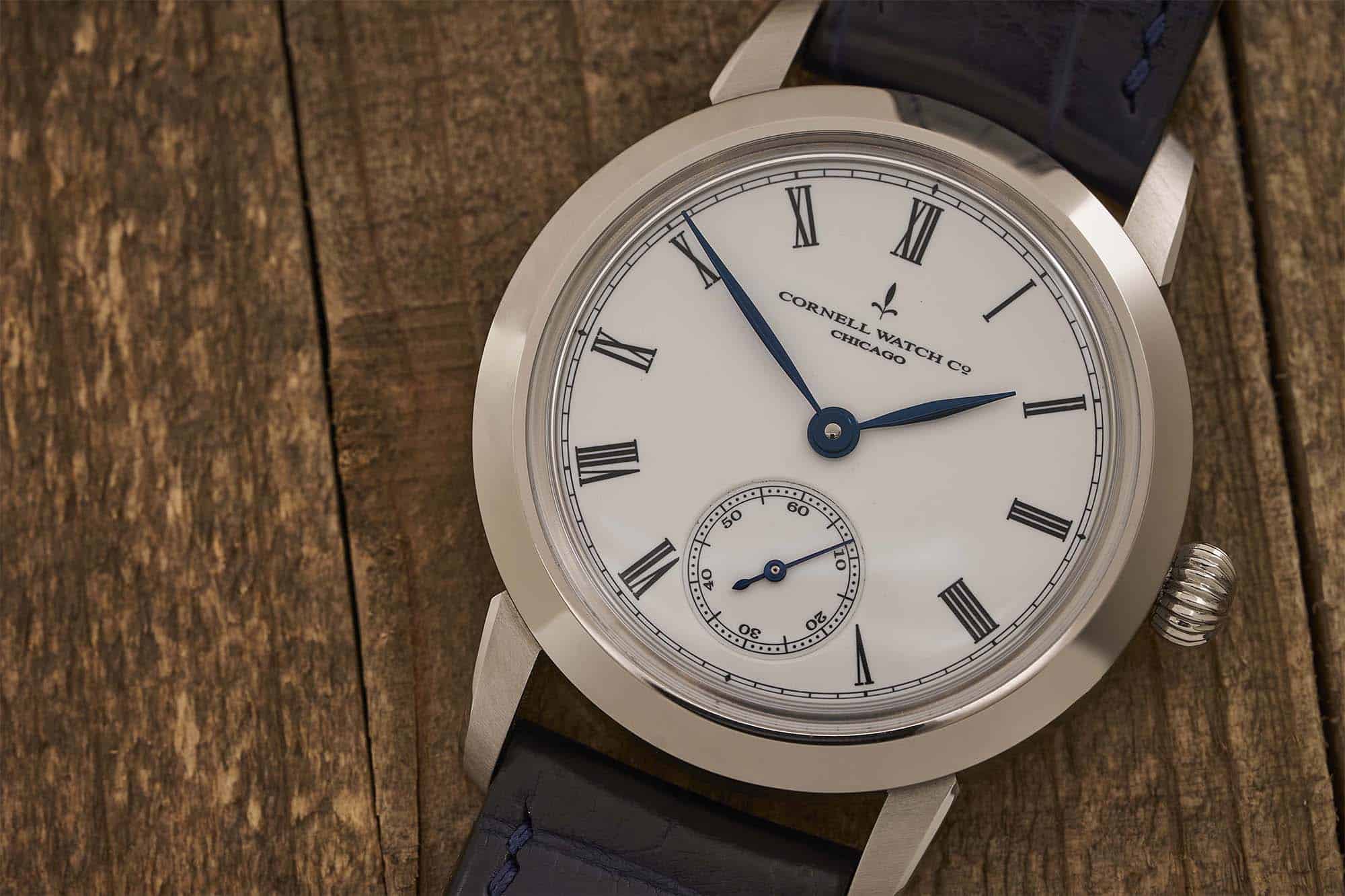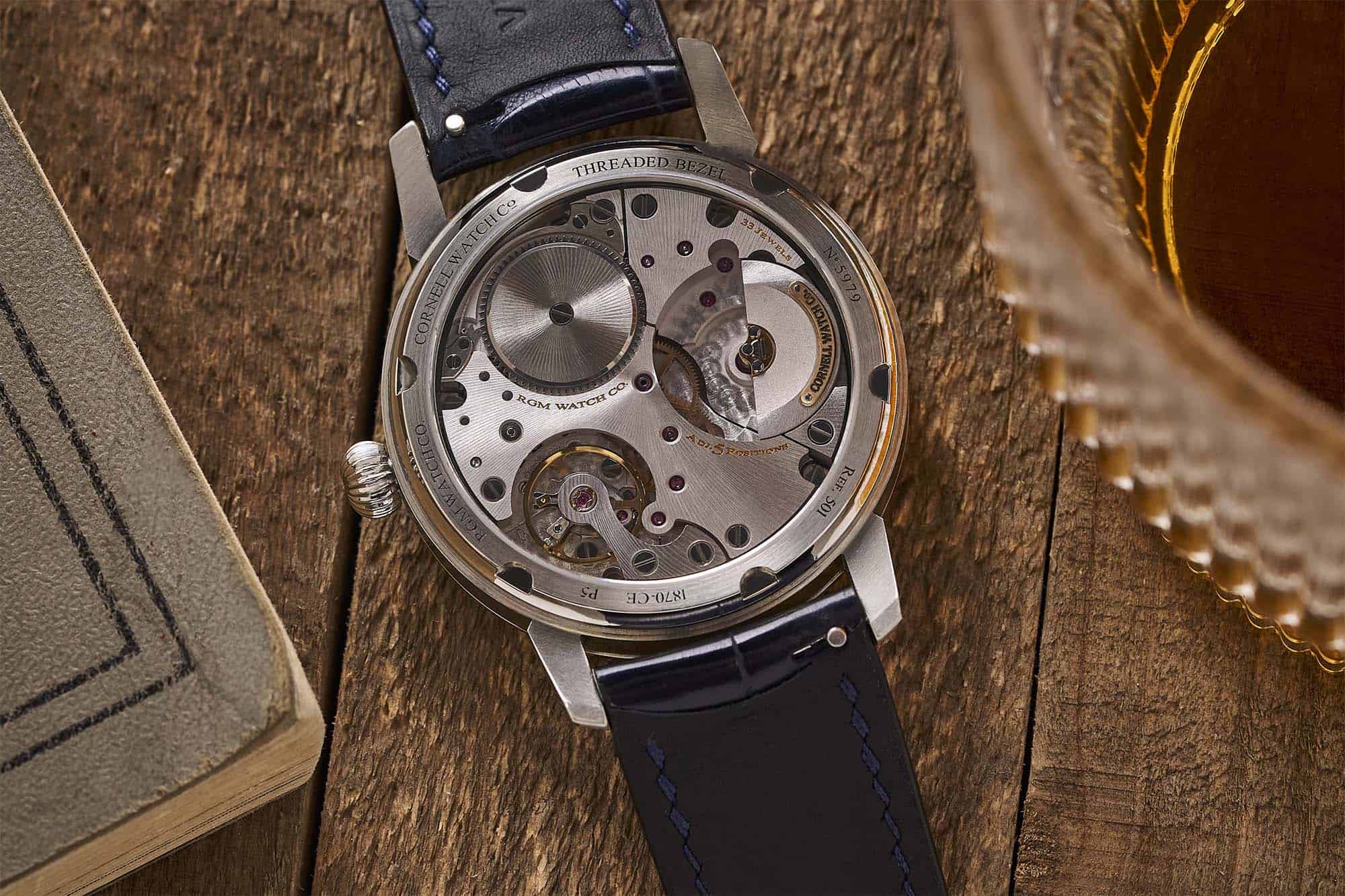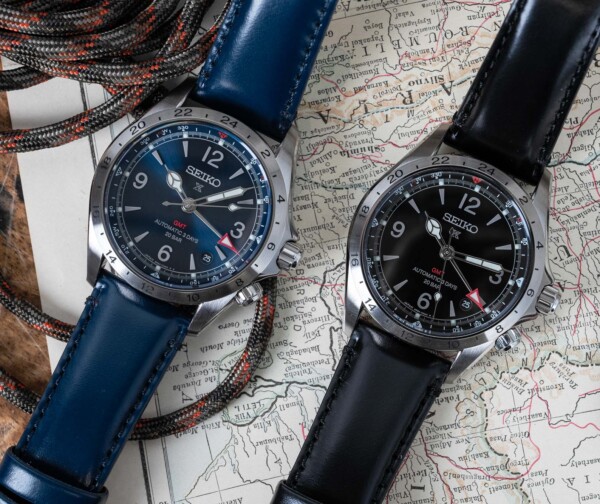To many people, Roland Murphy is American watchmaking. His company, RGM Watch Co., is revered among watch enthusiasts for producing pieces that rival anything put out by the best Swiss watchmakers, all done in Lancaster, Pennsylvania. Murphy was, then, a natural partner for the Cornell Watch Company, a newly revived heritage brand out of Chicago that founder–or re-founder, I suppose–John Warren hopes can help bring attention to the American watch industry and its rich heritage.
“I think people don’t know that American companies made more watches between the late 1850s and early 1900s than anywhere in the world,” said Warren in an interview with Worn & Wound. “I don’t think people know that we pioneered the American system of watchmaking that was adopted by the Swiss and the Japanese. I think it’s a story people want to know and it’s worth telling.”
Cornell’s story began in 1870, when Paul Cornell and John C. Adams founded the Cornell Watch Company to create railroad pocket watches. Cornell was prolific in timepiece production for a few years, but two tragedies, the Great Chicago Fire and the financial crisis of the Panic of 1873, hit the company hard, and brought it to an end. While an attempt to move Cornell to California to save it was made–along with an attempt at rebranding as the California Watch Company–Cornell shut down not long after.
But several Cornell’s pocket watches led to the company having a second life when they were discovered by Warren while a college student at the University of Chicago, not far from where Cornell’s original factory had been located.
“I was collecting the pocket watches because a lot of the watches I wanted were wrist watches and I couldn’t afford them,” said Warren.
Warren was fascinated by the movements in Cornell’s pocket watches, which could vary significantly from watch to watch thanks to differing movement designs, the number of jewels, and even the signature on the movement:
“Paul Cornell is on many of the movements. J.C. Adams was also involved in the company. He was known as the Great American Starter, and he started six other watch companies, including Elgin. Another big one is Charles L. Kidder, who was the co-founder of IWC, interestingly enough, and joined Cornell in 1872.”
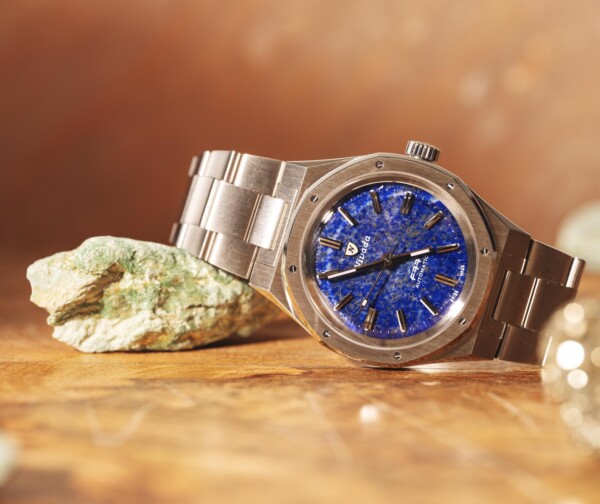








 Featured Videos
Featured Videos




